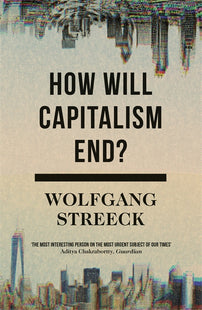Against Labour's “modern supply side" social democracy
Kier Starmer's “modern supply side approach” to the economy has been touted by some commentators as a transformative break from neoliberal orthodoxy. But, as Sahil Jai Dutta writes, its top-down managerialism will only continue the very orthodoxy that has failed us for decades.

After decades of pained, fractious opposition, the Labour Party is on the cusp of government. To get there, it has promised to break with the shibboleths of the Left and to do things differently. This is social democracy, they say, from the “supply side”.
While the market revolution has generated undoubted wealth, certain communities have been left behind. As the shadow chancellor puts it, Tory rule has left Britain with “a low investment, low growth, low skill, low productivity economy”. The party’s solution to combat this is for an active state to coordinate the supply-side: upskill the workforce, lift productive long-term investment, and develop infrastructure.
That was thirty years ago.
Three decades later, what has changed? In a recent pamphlet, shadow chancellor Rachel Reeves identified insufficient productive investment, short-termism and regional inequality as the key issues for a Labour government to tackle. The remedy, she says, is a “modern supply side approach”, where the state takes an active role in industrial policy and boosts long-term productive investment and infrastructure. This she says will help lift productivity and growth across all parts of the country, not just the “people and places” that the market economy already favours.
While there are important differences between Labour’s economic policies from the New Labour era and today, the similarities are instructive. The Labour Party has long seen increased productivity and economic growth as the necessary precondition for social reform. But one aspect of this has often been overlooked. Crucial to this vision is the idea that the central state must work in partnership with private businesses to modernise and uplift the economy.
The left has often seen this approach as a capitulation to market forces and private profit: by pursuing growth through partnership with private companies, New Labour betrayed social democracy for Thatcherite neoliberalism. Even Reeves herself has hinted that perhaps the last Labour government was too enthralled with the idea of a limited state and globalised markets. Yet, a closer history of social democracy might question such easy answers.
[book-strip index="1"]
While New Labour certainly preached the language of market freedom, they practised something different. Their supply-side pursuit of what was then termed the Knowledge Economy meant both a significant quantitative increase in the fiscal size of the state, and the qualitative construction of new mechanisms of planning rooted in public-private partnerships.
Between 1997 and 2009, NHS funding increased from 6.1 percent of GDP to 7.9 percent, education spending went from 4.5 to 5.6 percent of GDP, and early years spending from 0.24 to 0.7 percent. Spending on universities also increased by 25 percent (double that if fee income is included). These were not just electoral bungs afforded by a bubble economy, but central to its social democratic economic strategy of public-private coordination.
Private financing came alongside public investment, and private provision alongside common ownership (the NHS and schools were not privatised after all). To allocate and manage these extra resources, new layers of bureaucracy were created. Everything from the Standards and Effectiveness Unit in the Department of Education, to the Foundation Trusts for Hospitals, and Academy Trusts for schools, were founded or expanded. It was a far from limited state.
These bodies – and the class of professional managers who staffed them – were crucial to New Labour’s economic strategy. While much of this activity existed outside of the traditional public sector, consultants from Arthur Andersen or construction professionals from Carillion were meant to align into an overall direction set by government officials in Downing Street.
Reckoning with this history matters for how we understand the present. Much of the criticism of Labour’s contemporary Green Prosperity Plan from the left has focussed on how it must eschew the “market coordination” of societal resources in favour of “public coordination”. A “market-led approach”, writes Common Wealth’s Melanie Brusseler, would “coordinate the [green] transition through private investment, market-based governance and profitability”. This would fail because, she writes, competing, self-interested profit-maximising firms would be unable to coordinate and achieve a society-wide goal. This is the problem of the fallacy of composition. A better alternative would be based on “public investment … common ownership and new institutions of public coordination”. This would allow central government to better oversee and arrange the key factors of production and infrastructures needed for a green transition.
A similar distinction holds in the idea of the Big Green State, that would use state money to pursue public good over profit, versus a “De-Risking State” that would do the opposite, underwriting private profit with public resources. Such a distinction in the kind of state involved in industrial policy is crucially important.
Yet New Labour often eluded such strict dichotomies. To implement its vision for the Knowledge Economy it built something akin to a Big Social State that organised the raising and allocation of capital, investment and labour in a way that merged and remade both public and private interest. Far from embracing free-markets, New Labour entrenched a tradition of managerialism that ran from the post-war years and into Thatcherism.
This is a history that has often been overlooked. In the decades leading up to Tony Blair’s victory in 1997, a set of institutions, techniques, firms, and experts developed that formed the managerial infrastructure that coordinated the social democratic state. Ideologically, there were hints of this in the patrician interventionism of Fabian Socialism. A central cadre of professionals who could stand between the market and the populace, to coordinate the best outcomes for all.
While in the postwar era significant gains were achieved, there were always limitations and criticism came from both the Left and the Right about waste, efficiency and the lack of democracy. Policymakers too were frustrated about the “responsiveness” of public services and public industries to central direction and their capacity to force change. By the 1960s they felt that, while the state was flush with resources, public expenditure had to be more forcefully managed by Whitehall policymakers. To do so urgent modernisation was needed to how policy objectives and spending choices were set.
Neoliberals of course thrived on this. They pushed their ideological agenda about limiting the state to a mere an enforcer of market rule. But in the practicalities of government, this kind of market order was never going to be sufficient. A more direct approach to state governance was needed.
While hostility to public-sector workers and local government officials was standard for Thatcherite politicians, Labour’s social democrats often shared their frustrations. Labour governments took electoral flak for specific policy outcomes, but their ability to influence what happened in schools, hospitals, or the nationally owned industries was limited.
Rather than take up the neoliberal charge for markets, both parties pursued a more active form of managerial coordination that married the interventionist sensibilities of Fabian statism to a more modern, scientific and quantitative form of policy-making that had grown up in Cold War America. This became central to the way New Labour governed, packaged into what came to be known as New Public Management.
[book-strip index="2"]
NPM is often thought of as a neoliberal form of public administration, but it belongs more clearly to the managerial lineage of postwar planning. New Labour’s enthusiasm for it was not imposed by a neoliberal vanguard, it came from within the modernising traditions of social democracy itself. A key aspect of NPM was to split “providers” – public services – from “purchasers”. As seen from Whitehall, this made front-line public-sector providers interchangeable parts whose work (and conditions) could be examined only from a distance. The focus therefore shifted to a new class of professionalised purchasers whose job it was to procure public services in line with particular outcome targets. These purchasers would be given budgets from the central state not just to try to control public spending, but to identify the specific objectives that would underpin any headline policy programme. Rather than worry about specific inputs the focus was now on policy outputs. It was on upper management strategizing, rather than frontline practicalities.
Upper management of private providers, and Whitehall officials, would then scrutinise their plans through performance management tools, continual audits and league tables. As the Labour party historian, and vocal defender of New Labour, Glenn O’Hara has described, these “systems [of NPM] were underwritten by a more powerful central state capable of monitoring these commissioning systems as hub, coercive regulator and ultimate guarantor.” This managerial infrastructure was mobilised by New Labour across all the models of ownership: public, PPP, and state-procured private provision.
In many ways what this promised was the public coordination of the social democratic Knowledge Economy. But much of what it delivered was far from progressive. Workers in the key healthcare and education sectors were subjected to ever more managerial processes of discipline as well as shrinking pay. As O’Hara documents, after Labour’s first years in power, NHS managers claimed that the number of targets they had to meet had reached over 300, while later the Audit Commission found evidence of “deliberate misreporting” as NHS Trusts strived to meet the multiple objectives imposed upon them. This is just one example of its effects. The same taste for authority and targets was also felt by service-users, especially in the job centres that were supposed to reskill workers for the modern context, where knowledge and skills would become the new economy’s “commanding heights,” as Blair put it.
Managerial coordination made the provider-purchaser split, targets, and contract design central to supply-side interventionism under New Labour. Crucially, it also opened up new avenues for extraction by intermediary contractors. Entire new industries were created by firms offering management solutions, audit services, contract design, and financing arrangements to a social democratic state in the business of modernisation.
By bringing private providers into closer partnership with the state as procurer, it solidified a class that straddled the boundary between public and private. The recent call by Labour shadow cabinet members to commission private health providers to help bring down NHS waiting times is symptomatic. More broadly, a company like Serco, which started as a defence contractor, later morphed into a procurement planner of its own in the New Labour years, winning state contracts and commissioning its own arms-length providers in turn. The social democratic state did not passively capitulate to the market, it remade the business model of an entirely new ‘public service industry’.
These developments are part of what constitute the contradictions of social democracy in the UK. In purely economic terms, it is very hard for industrial policy to deliver growth and further exports in a world market defined by overproduction and stagnation. That is why Labour today cites exactly the same problems of low growth and productivity that it did in 1995, and why every government in the last forty years has delivered slower growth than the one that preceded it. But just as intractable is the difficulty of making centrally-designed state-level industrial policy truly democratic.
Resolving this is as complicated as conceptualising it. It is important, therefore, to consider what the politics of ownership means for the Left. Often, governance is seen as straightforwardly derivative of ownership. Changes in ownership, from public to private, are thought to drive changes in governance. Yet it might be that the reverse is true.
The more that the social democratic managerial infrastructure has evolved, the more entrenched a cadre of professional planners and private firms who extract from the state have become. Outsourcing and private provision make most sense for managerial coordination from the centre where the focus is on goal setting rather than participation. Private gain from the public sector is, from this perspective, less a story of a diminished state’s inability to withstand corporate predators than entirely functional to the social democratic mode of governance.
[book-strip index="3"]
Tackling this means departing from the focus on productivity and growth that has long been the staple of social democratic strategy. Supporting basic liveability in communities may not fit the grand visions of Industrial Policy. It could, however, be the central focus of economic strategy, rather than an assumed by-product of it. Doing so will come with a recognition that working class empowerment is more important than centrally determined targets. There are short-lived prototypes at the edges of socialism and social democratic history in the UK forged on this and more participatory forms of planning. The much-discussed Foundational Economy experiments in Wales are contemporary examples. There, the devolved Welsh government and local councils have supported small businesses, community groups and co-ops in efforts to uplift society and economy in ways that aren’t centred on productivity and growth. Then historically, there was the 1980s GLC, which did not only fund local arts, pressure and community groups, but attempted, at times, to include them into decision-making. Both are very different, and not without their limitations, but neither were defeatist retreats into a folk politics of localism. They were serious attempts to grapple with planning as a site of socialist struggle.
The Labour Party of today, however, shows little interest in popular empowerment. Rather, it is deeply committed - rhetorically, ideologically, and in its personnel - to its New Labour past. That means that, whatever its rhetoric now, Labour is unlikely to shun state-backed investment in power, nor will it shy away from directing private capital to its objectives. Yet, to do both, it must rely on the managerial infrastructure, and the class that occupies it, that has long dominated British politics. This centralised and highly top-down approach will cut through the public-private divide, but will still be a significant obstacle to truly progressive change.
This is why we should be wary about treating the “modern supply side approach” or Starmer’s much-touted “National Missions” for the economy as a transformative break from neoliberalism. Rather than rejections of market-rule and a revival of social democracy, they continue the very orthodoxy that has failed for decades.
Sahil Jai Dutta is a lecturer in political economy at City, University of London. He is a co-author of 'Unprecedented? How Covid-19 Revealed the Politics of Our Economy'.




